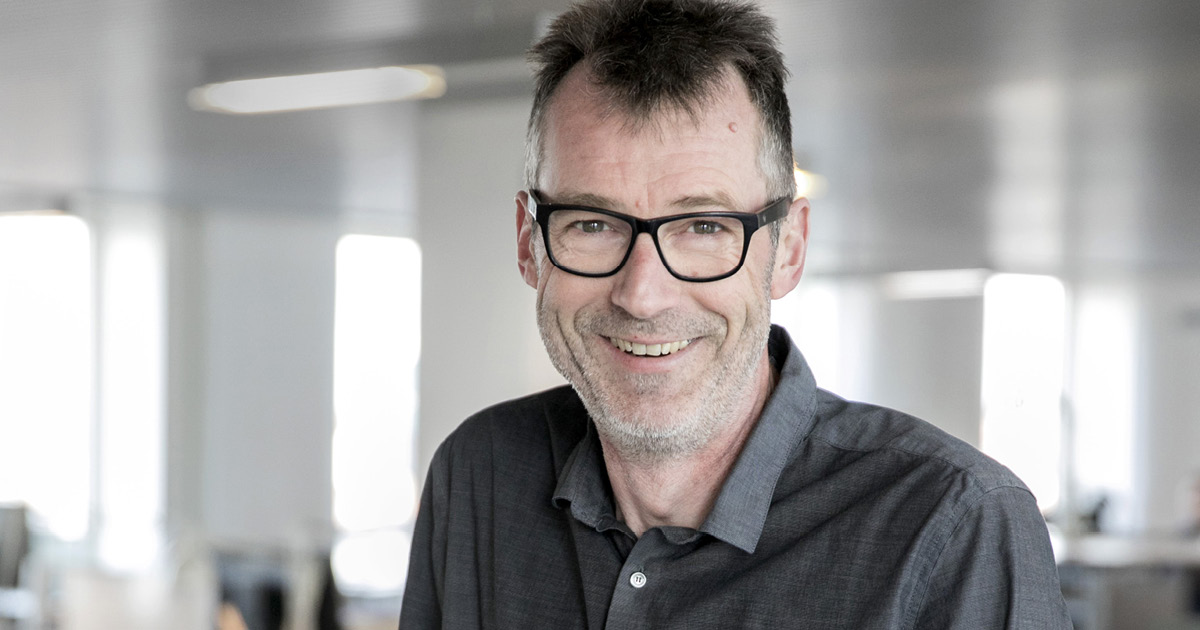Jan Stausholm Bundgaard has led his team at C.F. Møller Denmark into a productive work environment combining Building Information Modeling (BIM) and database management. Despite the boost in cost and time efficiency, he argues in favor of evolution over revolution. Preview to his speak "The human factor - often underestimated in digitalization" at BIM Forum.
A 20 Percent Increase in Efficiency
When the idea of combining models and information in a single 3D environment was invented, the whole process was still very costly in terms of work and time, but over the last five to ten years a lot has changed. Instead of planning in 2D and thinking in 3D, the standard is now to create 3D models and apply specific parameters to all parts of the object, describing their qualities, their use and their demands. For competitions however, Jan Bundgaard’s team still creates two-dimensional plans:
“When we start with a competition, we don’t use BIM, because people mainly want to see nice pictures. When we go ahead with the project, we immediately switch to BIM.” Sometimes they even create a quick model to get a rough idea, but the workflow does not start until the project is approved.
Bundgaard’s BIM workflow consists of three main phases, during the first two of which architectural models are exchanged once a week in order to be updated and adapted. In the final phase, the files are linked via cloud service and the models are all combined into a single one.
It is crucial however to know which information is needed and when it is needed. When data is fed into the system while it is still subject to changes, the model becomes unreliable and people lose confidence into the data. It is thus highly important to consider each phase of the process separately and enter only information that is known to be correct.
That way, Bundgaard’s team manages to get the same amount of work done in the same time with less manpower. Where in 2012, when they dropped 2D, they had teams of five; they are now working in teams of four and coming up with higher quality results.
Choosing Evolution over Revolution
Bundgaard’s team started with Revit, their BIM software of choice, in 2009 and kept using the program alongside AutoCAD until 2012. In the beginning their models were too detailed and continuously adapting to changes was eating up a lot of time. Today, the models are simpler but contain more useful information. “This is nothing you can do overnight or within half a year”, he says. “With a team of twenty people, perhaps you can. But at the time we were four hundred. It is like turning a ship: when you are sailing and you do a 180° turn, you need time and you need everybody on board.”
In the beginning he was wishing students would learn the basics of BIM at university, but today he says that above all they should be good designers. BIM is being taught in-house and it never stops. Bundgaard’s team has eight BIM workshops every year and every project has its own BIM coordinator who meets with all other BIM coordinators four times a year in order to learn from each other’s problems.
“What we are aiming at is creating a work environment where man and machine are working together”, he says. “What I am good at is using my brain, and what the computer is good at is structuring what I am thinking when I put it into the computer.”
About Jan Stausholm Bundgaard | C.F. Møller Danmark

BIM is not a tool, it is a process. Since 2006 employed in C.F. Møller as Head of BIM and Strategy, responsible for CAD support, internal education and development, changing the 2D drafting to 3D modelling in AutoCAD. This went through a major change in 2009, when he introduced Revit as the main design software for the design phase and did a continous work to split data and geometry to make BIM effective. Since 1990, he has been in numerous development- and working groups related to BIM standards and development in Denmark, always with a focus on the individual user, aiming fo IT being developed for people and not for systems. Jan Bundgaard has been in the building industry since 1984 where he has been employed in consulting engineer- and architectural companies as a construction architect. From 1996 to 2006 he worked in the IT industry for various CAD resellers and as a self employed independant consultant.
Veranstaltungstipp:
BIM Forum - Building Information Modeling, 27. / 28. April 2020



